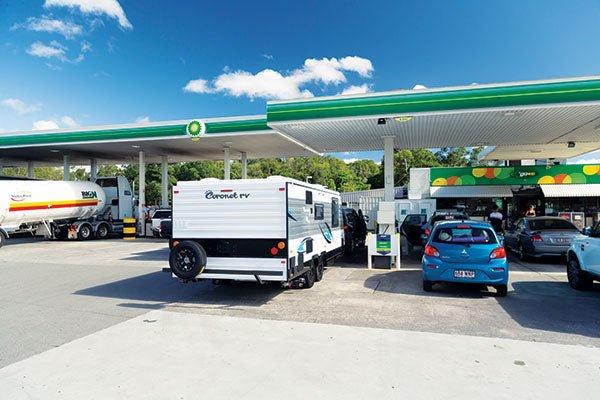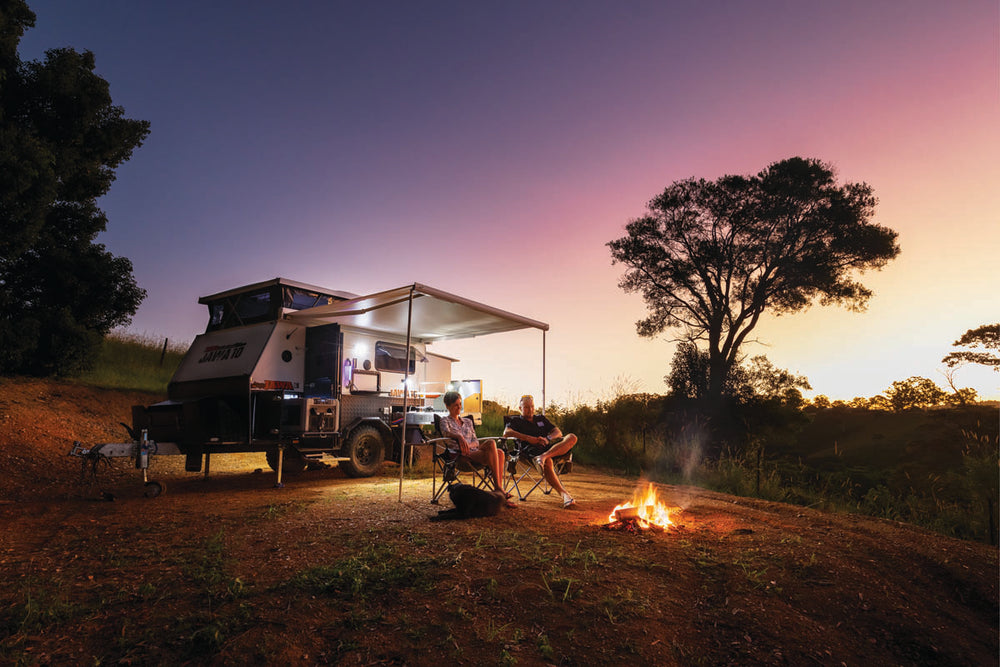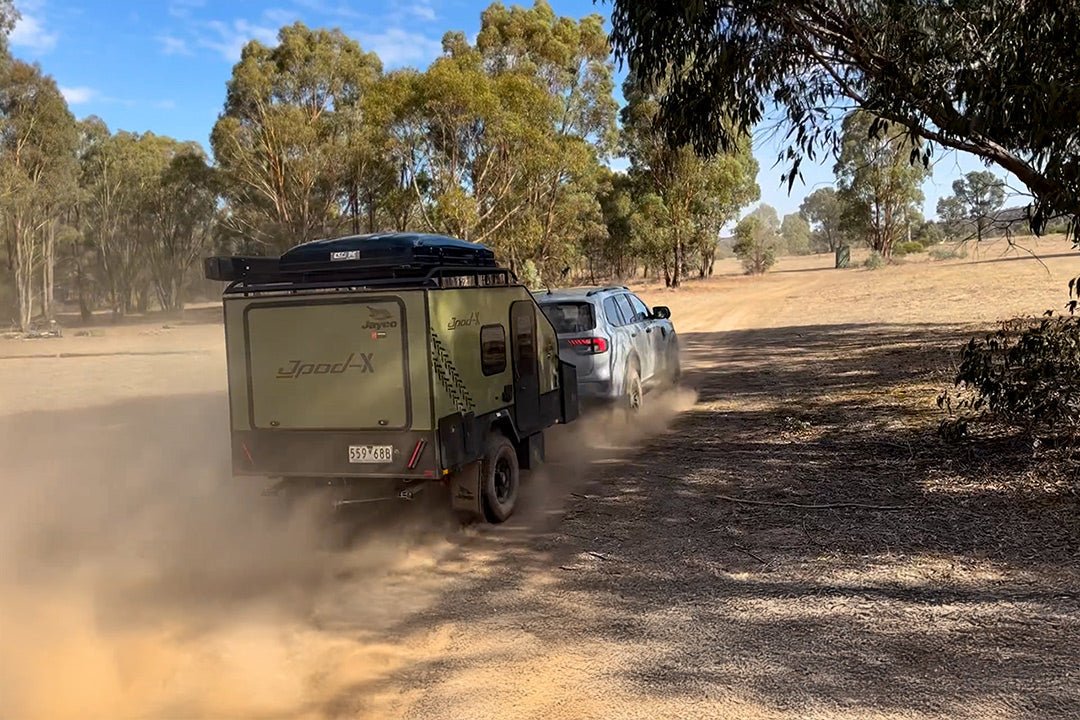Fuel efficiency test

In the scheme of problems around the world, the fuel efficiency of a caravan is, undoubtedly, a ‘first-world problem’. So there’s not much official research going on in that area. But it’s a perplexing question that affects the tens of thousands of RVers on Australian roads and, if you can save a little on fuel by picking the right shaped caravan, then you’ve got all the more in the kitty to buy a little extra sparkling pinot and cheddar for happy hour!
THE VEHICLE
Our tow vehicle was a Toyota 200 Series LandCruiser, a familiar beast to many caravanners.
Known as ‘the king’ of the tow vehicles, its V8 turbodiesel engine knocks out 650Nm of torque at 1600rpm, meaning it’ll grab the ground like Usain Bolt’s track shoes. Better still, it’ll run you from Sydney to Melbourne and burn only about 9L of diesel every 100km of open road motoring. Moreover, it’ll do it without too much of a tailwind. Even better still, it belonged to Caravan World dealership boss Brad Pendelton and the thought of driving his boss’s car for two days had our mate Steve excited by the project!
THE CONTESTANTS
SLOPING FRONT: KOKODA VETERAN XLi PLATINUM
The first caravan out of the yard was a Kokoda Veteran XLi Platinum - the winner of Caravan World magazine’s Best Aussie Vans 2016 ($50K-$65K category). Billed as a ‘semi-offroad’ van, the Kokoda’s sloping front made us think it might offer the best aerodynamics, produce the least wind resistance and churn through the least fuel.
With a Tare weight a smidge under 2400kg, a total length of 8.3m and an exterior height of nearly 3m, this beaut van had similar specs to our next contender, the Limited Edition Option RV Traction.
BLUNT: OPTION RV TRACTION LE
With a much blunter front profile, the Option RV’s vital stats meant it would make an easy comparison as it had an almost an identical weight to the Kokoda rig, while being marginally shorter and a similar height at 2.9m.
POP-TOP: CORONET FS3-5950
We also had Coronet FS3-5950 pop-top caravan which, length-wise, was similar to the Kokoda and Option RV vans but tipped the scales around 300kg lighter while boasting a travel height around 70cm lower than the Kokoda.
CAMPER TRAILER: BLACK SERIES DOMINATOR
Then, for a total contract, we had a Black Series camper trailer, which was about a tonne lighter than both full-sized vans and approaching 500kg lighter than the pop-top. What’s more, it came in around half the height of the full-sized vans.
THE NUMBER-CRUNCHING
The idea was to compare the fuel efficiency each van produced to the shape of the van or camper.
That meant bringing each measurement down to a figure of fuel consumption/100km/tonne.
That meant that if fuel consumption from a caravan that weighed in at 2000kg was 10L/100km, then when you take into account its weight, you get a fuel consumption figure of 5L/100km/tonne. That way, the variance in weight between the test vans becomes irrelevant, as all our figures would be on per tonne basis.
THE TEST TRACK
The first leg was a relatively easygoing 27km of highway driving with gentle slopes and bends on a multi-lane carriageway. That left a second leg of a 23km country roads around and over rolling hinterland foothills on a good bitumen track called the Eumundi-Kenilworth Road.
The gazetted top speed on the first leg was 110km/h and Steve took advantage of every bit of it, until the tailwind caused the Kokoda to wag its tail like a burlesque dancer on a Saturday night. Then Steve drew in the reins and settled the show down.
By the time we hit the highway exit on the Eumundi-Kenilworth road, it was smooth sailing. From then on, every run was at a comfortable average of around 95 km/h all the way until we reached our turn-around point at a roadside stop called Pioneer Park at a little locality named Gheerulla.
THE RESULTS
After two days of testing, it was time to tally the results.
The Kokoda sucked up the most fuel at 11.62L/100km/tonne and the Option RV and Coronet were remarkably similar on 8.91L/100km/tonne and 8.94L/100km/tonne, respectively. But the Black Series Camper came in with an unexpected 10.54L/100km/tonne.
It looked like our over-exuberant run with the Kokoda had made a huge difference to the fuel efficiency, given that, in fuel consumption terms, you could throw a rug over the results from the other two caravans, although the lower travel height of the Coronet helped a little there.
However, the camper trailer result had us scratching our heads. I now had to try and understand why, when you account for the difference in weight, the camper came off worse than the pop-top or the Option RV.
So I hollered for help from an actual scientist.
EXPERT ANALYSIS
I approached Joel Thakker from aerodynamics specialists Leap Australia. With a degree in aerodynamics and Masters of Science, Joel, the engineering solutions manager for Leap, really knows his stuff.
To try and explain how tow vehicles and caravans interact on the road, Thakker came up with a generic shape of a caravan and a tow vehicle then placed them in a virtual wind tunnel. Thakker then looked at five aspects that included:
- the front angle/shape of the caravan
- the curvature of the roof
- the relative height of the caravan to the tow vehicle
- the drawbar length, and
- the travel speed
“From an aerodynamics perspective, the performance of a caravan depends a great deal on what is in front of it,” Thakker said.
VIRTUAL TESTING
Thakker’s analysis found that, above everything else including the shape of the van, the single thing that contributes most to fuel consumption and causes your caravan to tangle with air resistance the most is the speed at which it is driven.
“The drag you experience at 30km/h is a quarter of the drag that hits you at 60km/h. So, unfortunately, speed will eat into your fuel economy and holiday budget more than anything else,” he said.
As our test drive and the virtual wind tunnel results showed, the next most important factor is the van’s height. In third place is the length of the drawbar.
Thakker ran wind tunnel experiments and more than 100 simulations that told the story. The experiments used virtual rigs travelling at 95km/h and involved changing the relative height of the caravan and tow vehicle and changing the drawbar length. Thakker says the changes to air movement in the virtual wind tunnel was obvious.
A WIN FOR SHORTER VANS
The virtual testing showed that, with a van pulled closer to the tow vehicle by a shorter drawbar, the air tends to hug both vehicles more tightly and, at the back of the caravan, the air just drops down to the ground, without creating a large, turbulent wake behind it.
“By looking at the airflow between the two vehicles, we could see that the red (high speed) region was more prevalent in the more compact design. The blue/green (low speed) region, which occupies a slightly larger space in the taller configuration, is typically where air recirculates, creating turbulence and increasing drag,” Thakker said. “One way to think of it is, the faster the air exits the region between and past the two vehicles, the less likely you have to carry it along for the ride.
“There is some hope for those who seem to be in a perpetual rush, though. Slight tweaks to your towing configuration could drop off some of the drag that your lead foot puts on.”
The data showed a shorter drawbar and shorter caravan reduced the drag by 48 per cent. Needless to say, that is a massive saving and a lot more beer money at camp.
But knowing how short a caravan needs to be, or how short the drawbar should be to get the best fuel economy is hard to work out. That’s because you could have a long drawbar but a low driving speed – which means your net drag would be down. Our road test vans all had tow vehicles of reasonably similar lengths so we didn’t experience fuel consumption results that mirrored the virtual data.
THE FINAL WORD
It turns out, everything matters when you’re talking about fuel efficiency – speed, shape, road interaction, drawbar length and more. It’s like squeezing jelly – you squeeze on one side and something else side pops out. The aim here is to contain all of it into one package of ‘acceptable’ fuel economy.
The full feature appeared in Caravan World #566. Subscribe today for the latest caravan reviews and news every month!







